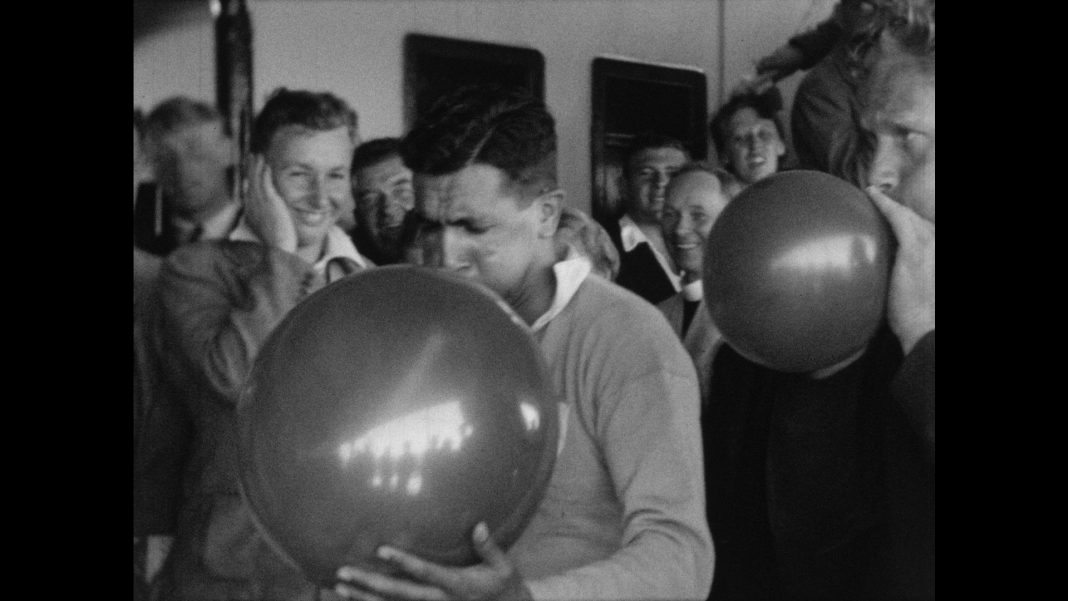A marrying of the old and the new, a collaboration between the National Film and Sound Archive (NFSA) and the Australian National University (ANU) gives new life to archival footage. The St Kilda to St Moritz: Scoring Silent Home Movies event screens at the NFSA on Friday 13 October.
For the second year in a row, students from the ANU School of Music have been invited to create soundtracks for short silent films in the NFSA collection.
“Last year, we did a range of silent films from the Corrick Collection, which is a different collection within the Archives and this year, we’ve put out what’s been called home movies,” says Travis Green, manager of programs and visitor experience at NFSA.
The short silent films were captured between 1925 and 1980 across the globe. We see floods from Shanghai to celebrations and events closer to home.
The films have been selected by NFSA curator Heather Gill, who will join the composers for a Q&A after the screening.
“She has a lot of knowledge of the home movies, of the silent films of the early 1900’s that the NFSA holds in the collection. I approached her and was like ’what do we have that is interesting and diverse that people have not been able to see because they’ve been in vaults for decades’,” says Mr Green.
Student composers, most of whom have come from ANU’s Composition for Film and Video Games undergraduate course, put their own spin on silent films, often creating a new narrative. The composition of a soundtrack isn’t something audiences often consider when viewing a film, says Mr Green, although it completely changes the experience.
“The soundtrack of a film can actually help deliver a range of different experiences … You can look at modern film, your emotions are driven by what the music and the sounds give you apart from just the acting,” he says.
“It was really quite interesting to then take something that was made without sound and then apply a composition to it. You can watch the film and feel one thing but then the moment a soundtrack is added, it plays with the sense of emotion and how you can reread the film.”
Given free rein, in many instances the young composers have added a contemporary vocabulary to a classic piece of visual art.
“They’re not so much compositions of what you would think the sound would be like if it was a film with sound of its time, they have really been quite creative, inventive and diverse – the sounds that can be somewhat jarring or emotive or unique to what you’re viewing,” says Mr Green.
“Most of them will interpret in a modern way as if we’re looking back to the history of Australia and back to the history of Australian filmmaking from the view of the present day,” says Professor Kenneth Lampl, convener of the Composition of Film and Video game program at ANU. “It’s really interesting there will be some electric pieces, some orchestra pieces, vintage silent films pieces, very contemporary EDM pieces.”
Studying under famous film composer John Williams (Star Wars, Jurassic Park, Harry Potter and many others), Professor Lampl knows films and soundtracks. Coming to Canberra eight years ago as the head of the ANU School of Music, he is thrilled to be working with the Archives on such an inventive project.
“You’ve got the National Film and Sound Archive right on the campus and we have the composition for film and video game program right on campus. The collaboration seems so natural,” he says.
The task prepares the budding composers for professional practice. Students have had to submit an audition reel before landing the job and then have to correspond with Mr Green at the NFSA throughout the project.
“Like a professional situation where you’re working with a director or producer – you do your work, you get feedback, then you go back and if there are revisions to be done, you do those revisions. It’s fully collaborative in that Travis is giving feedback on their projects that it’s not just whatever they feel like doing,” Professor Lampl says.
Believing that our ears inform what we are looking at, he says this project is a completely different kind of multimedia experience. When you go to a James Bond film or superhero movie, you know what to expect from the score to the plot, whereas this project challenges you to think of both the sound and picture simultaneously.
“What happens when you get a different kind of music than you expect, you see the image differently … You’re going to a more interactive experience where you’re going to have to reinterpret the images to music that you listen to,” Professor Lampl says.
Discover how sound changes film in St Kilda to St Moritz: Scoring Silent Home Movies at the National Film and Sound Archive on Friday 13 October 6pm; nfsa.gov.au
Canberra Daily would love to hear from you about a story idea in the Canberra and surrounding region. Click here to submit a news tip.



